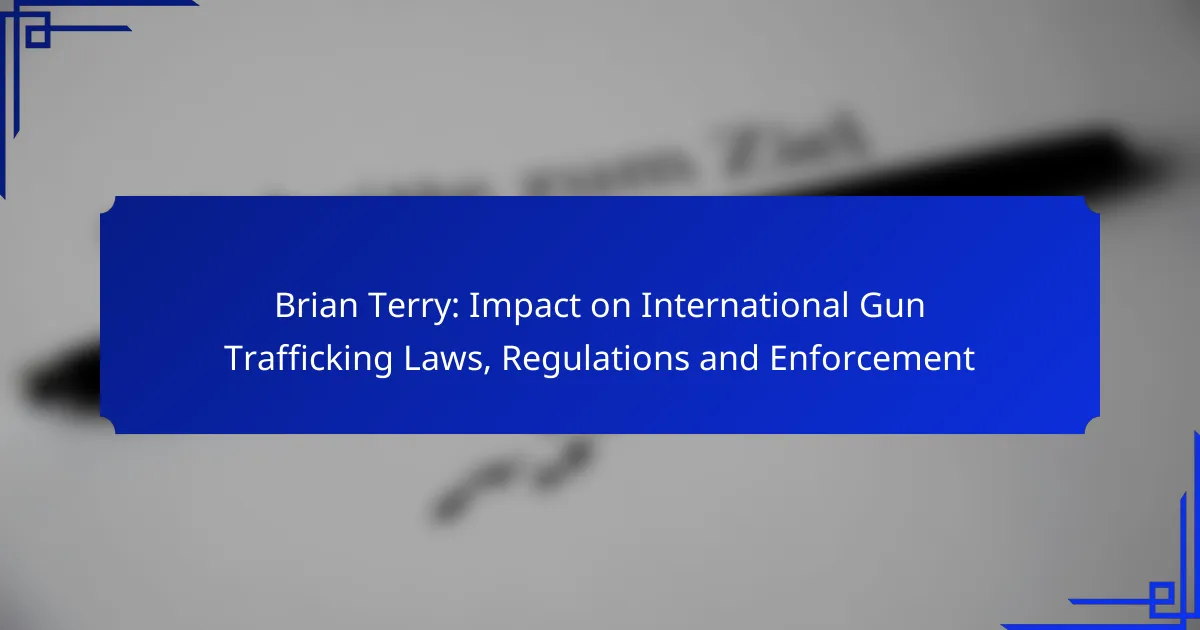Brian Terry’s tragic death has had a profound impact on international gun trafficking laws and regulations, revealing critical weaknesses in existing frameworks. His case has spurred a renewed focus on enhancing enforcement mechanisms and fostering international cooperation to combat illegal arms trade. As a result, law enforcement practices have evolved, incorporating advanced technologies and collaborative efforts to address the complexities of gun trafficking more effectively.
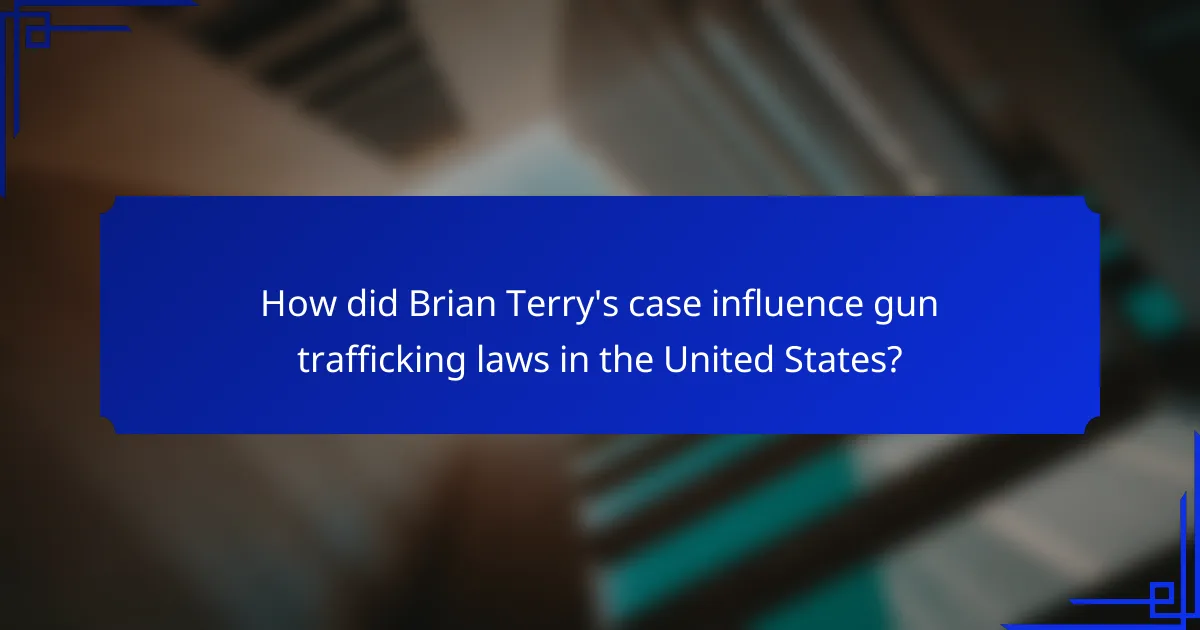
How did Brian Terry’s case influence gun trafficking laws in the United States?
Brian Terry’s case significantly impacted gun trafficking laws in the United States by highlighting the flaws in existing regulations and enforcement mechanisms. His tragic death underscored the urgent need for stricter controls and more robust federal efforts to combat illegal arms trafficking.
Introduction of stricter regulations
The aftermath of Brian Terry’s case led to the introduction of stricter regulations aimed at curbing gun trafficking. Lawmakers recognized the gaps in the system that allowed firearms to flow into the hands of criminals, prompting new legislation that tightened background checks and increased accountability for gun dealers.
For instance, the Bureau of Alcohol, Tobacco, Firearms and Explosives (ATF) began advocating for mandatory reporting of multiple sales of certain firearms, which helps identify suspicious purchasing patterns. These regulations are designed to prevent firearms from being easily trafficked across borders.
Increased federal enforcement efforts
Following Terry’s death, federal enforcement efforts against gun trafficking were significantly ramped up. Agencies like the ATF and FBI enhanced their collaboration with local law enforcement to track and dismantle trafficking networks more effectively.
Additionally, the federal government allocated more resources to investigate and prosecute gun trafficking cases. This included increased funding for task forces that focus on high-crime areas where illegal firearms are prevalent, ensuring a more coordinated approach to enforcement.
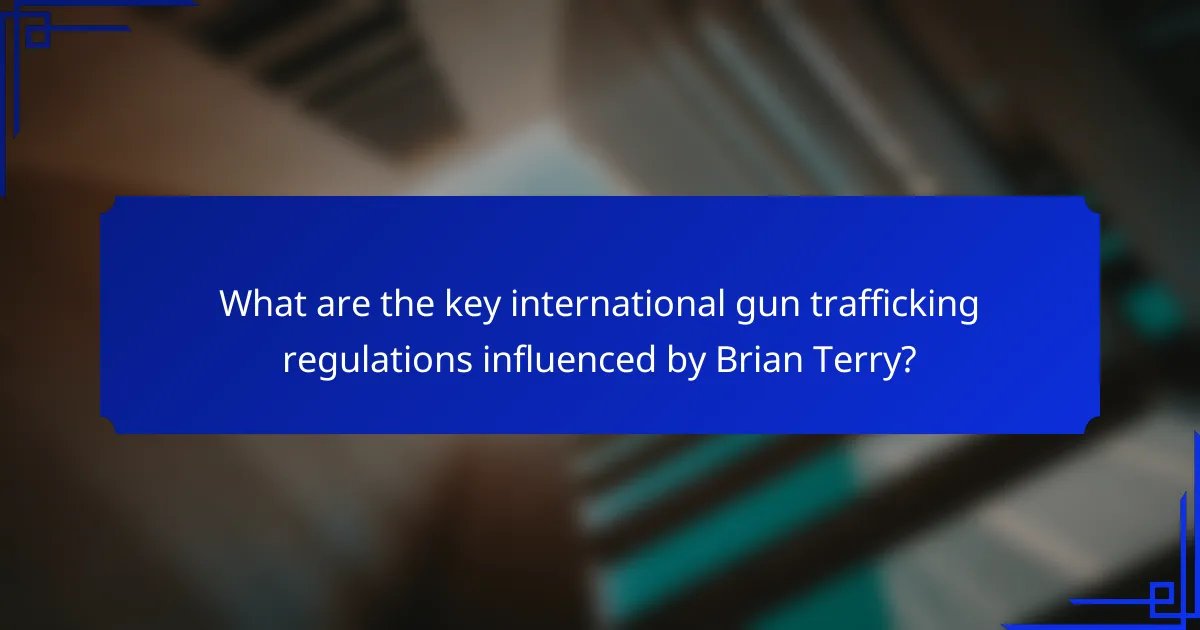
What are the key international gun trafficking regulations influenced by Brian Terry?
Brian Terry’s tragic death highlighted the urgent need for stronger international gun trafficking regulations. His case has led to increased scrutiny and development of laws aimed at curbing illegal arms trade and enhancing enforcement mechanisms globally.
UN Firearms Protocol
The UN Firearms Protocol, adopted in 2001, aims to combat the illicit manufacturing and trafficking of firearms. It establishes a framework for member states to regulate firearms, including marking, record-keeping, and the criminalization of illegal arms trade.
Countries are encouraged to implement measures such as licensing systems and international cooperation to trace firearms. Compliance with the protocol can significantly reduce the flow of illegal weapons across borders, making it a vital tool in international law enforcement.
ATF guidelines on gun sales
The Bureau of Alcohol, Tobacco, Firearms and Explosives (ATF) provides guidelines that govern the sale and distribution of firearms in the United States. These guidelines require background checks for potential buyers and mandate that dealers maintain accurate records of all transactions.
Adhering to ATF regulations helps prevent firearms from falling into the hands of traffickers. Dealers should be aware of their responsibilities, including reporting any suspicious activities and ensuring compliance with both federal and state laws to mitigate the risks associated with gun trafficking.
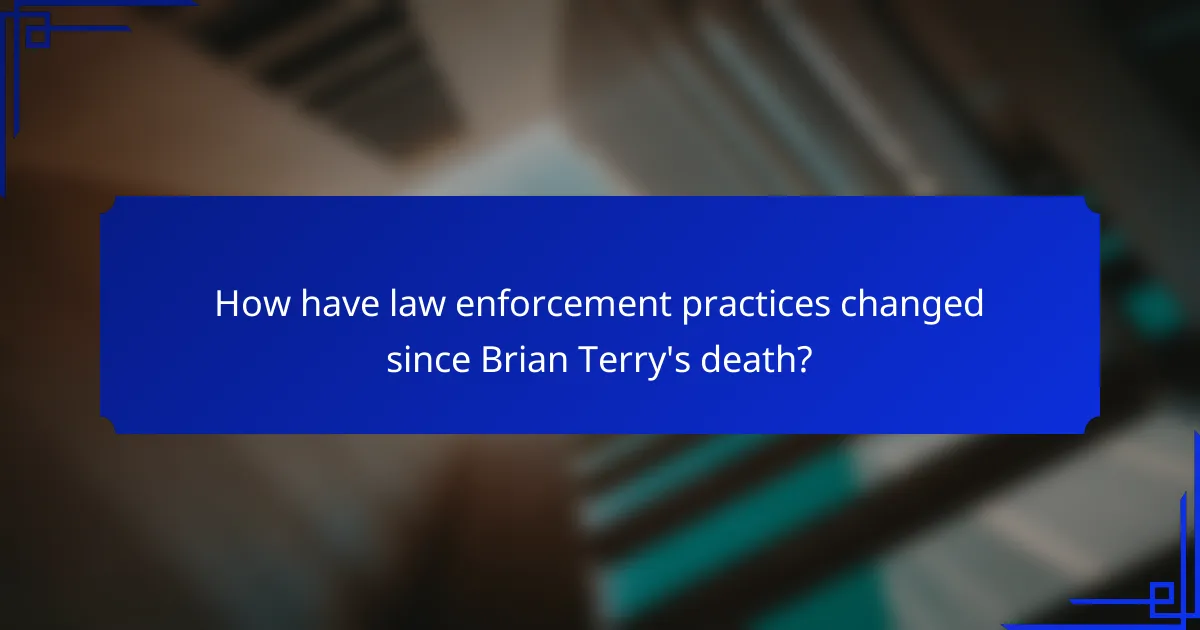
How have law enforcement practices changed since Brian Terry’s death?
Since Brian Terry’s death, law enforcement practices have significantly evolved to address international gun trafficking more effectively. Agencies have increased collaboration and adopted advanced technologies to enhance tracking and enforcement efforts.
Enhanced inter-agency cooperation
Following Terry’s tragic death, law enforcement agencies have prioritized inter-agency cooperation to combat gun trafficking. This collaboration includes sharing intelligence and resources between federal, state, and local law enforcement, as well as international partners.
For example, the Bureau of Alcohol, Tobacco, Firearms and Explosives (ATF) has strengthened its partnerships with agencies like the FBI and Homeland Security Investigations (HSI). These alliances facilitate coordinated operations and streamline communication, making it easier to dismantle trafficking networks.
Implementation of new tracking technologies
Law enforcement has increasingly turned to new tracking technologies to monitor firearms and identify trafficking patterns. Tools such as advanced data analytics and real-time surveillance systems allow agencies to track gun sales and movements more effectively.
For instance, the ATF has implemented systems that analyze gun purchase data, helping to identify suspicious buying patterns. Additionally, the use of GPS tracking devices on firearms has been explored to trace their paths from manufacturers to end-users, enhancing accountability in the supply chain.
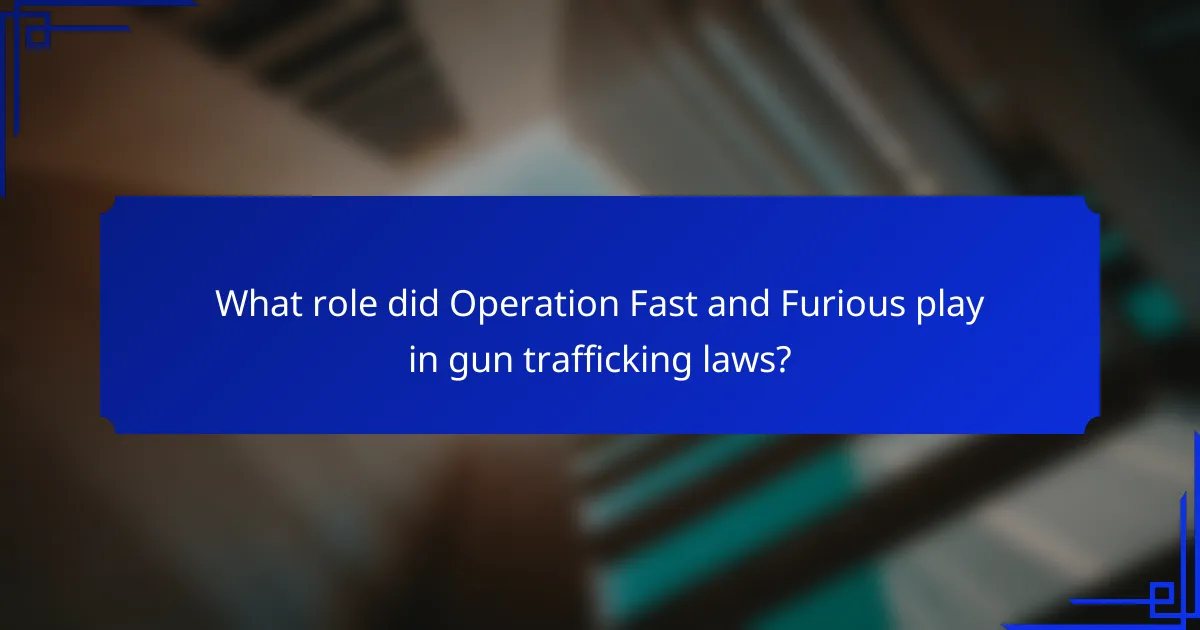
What role did Operation Fast and Furious play in gun trafficking laws?
Operation Fast and Furious significantly influenced gun trafficking laws by exposing weaknesses in existing regulations and enforcement practices. The operation, which allowed firearms to be sold to suspected traffickers, aimed to trace weapons but ultimately highlighted the need for stricter oversight and accountability in gun sales.
Controversial tactics and their fallout
The tactics employed during Operation Fast and Furious were highly controversial, as they involved deliberately allowing firearms to enter the illegal market. This approach led to widespread criticism from lawmakers and the public, who argued that it endangered lives and undermined trust in law enforcement. The fallout included increased scrutiny of federal agencies and calls for reforms in how gun trafficking is monitored.
As a result of the operation’s failures, several firearms were linked to violent crimes, including the tragic death of Border Patrol agent Brian Terry. This incident intensified debates over the effectiveness and ethics of such tactics, prompting a reevaluation of strategies used in combating gun trafficking.
Legislative responses to operational failures
In the wake of Operation Fast and Furious, lawmakers introduced various legislative measures aimed at preventing similar incidents. These included proposals for enhanced background checks, stricter regulations on gun sales, and improved tracking of firearms. Some states also moved to implement laws requiring better reporting of lost or stolen firearms to close loopholes exploited by traffickers.
Additionally, the operation spurred discussions about the need for comprehensive gun trafficking legislation at the federal level. While some measures gained traction, the political landscape remains divided, making the passage of significant reforms challenging. Stakeholders continue to advocate for policies that balance Second Amendment rights with the need for public safety.
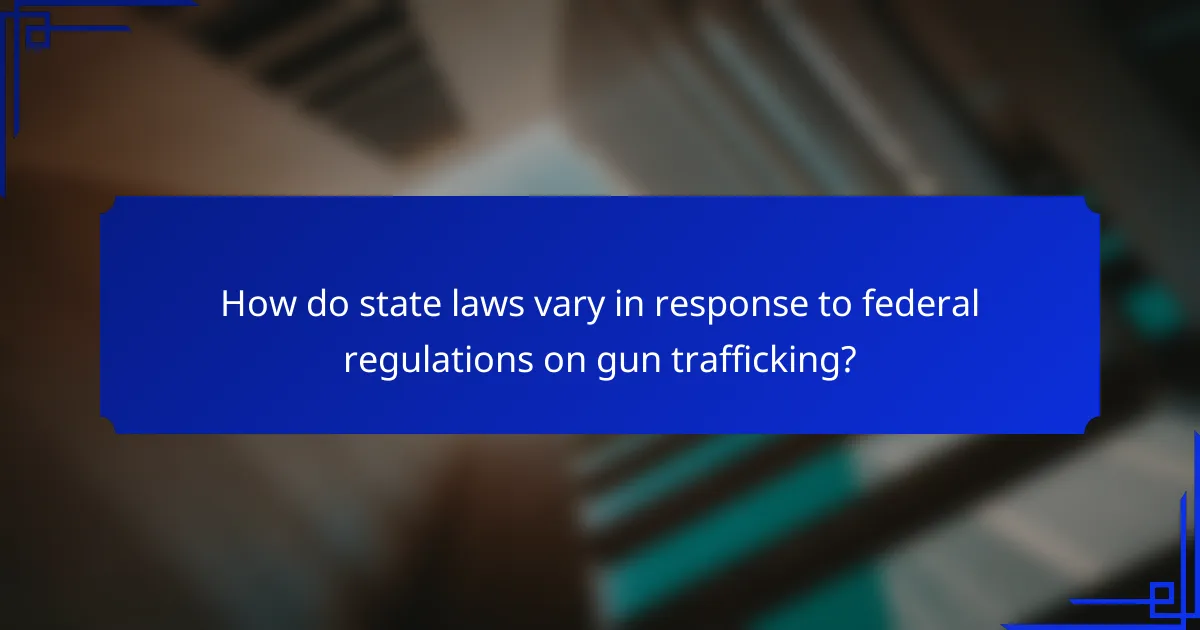
How do state laws vary in response to federal regulations on gun trafficking?
State laws on gun trafficking can differ significantly from federal regulations, often reflecting local attitudes towards gun ownership and control. While federal laws set minimum standards, states have the authority to implement stricter regulations, leading to a patchwork of laws across the country.
California’s strict gun laws
California has some of the most stringent gun laws in the United States, aimed at reducing gun violence and trafficking. The state requires background checks for all gun purchases, including private sales, and has a ban on assault weapons and high-capacity magazines.
Additionally, California’s laws include a “red flag” law that allows law enforcement to temporarily remove firearms from individuals deemed a threat to themselves or others. These regulations create a more controlled environment for gun ownership, impacting trafficking by making it harder for illegal firearms to enter the market.
Texas gun ownership regulations
In contrast, Texas has relatively lenient gun ownership laws, promoting a culture of personal responsibility and self-defense. The state does not require background checks for private sales, making it easier for individuals to acquire firearms without federal oversight.
Texas also allows open carry and has enacted laws that protect gun owners’ rights, which can complicate efforts to regulate gun trafficking. The lack of stringent regulations may facilitate the movement of firearms across state lines, potentially increasing the risk of illegal trafficking activities.
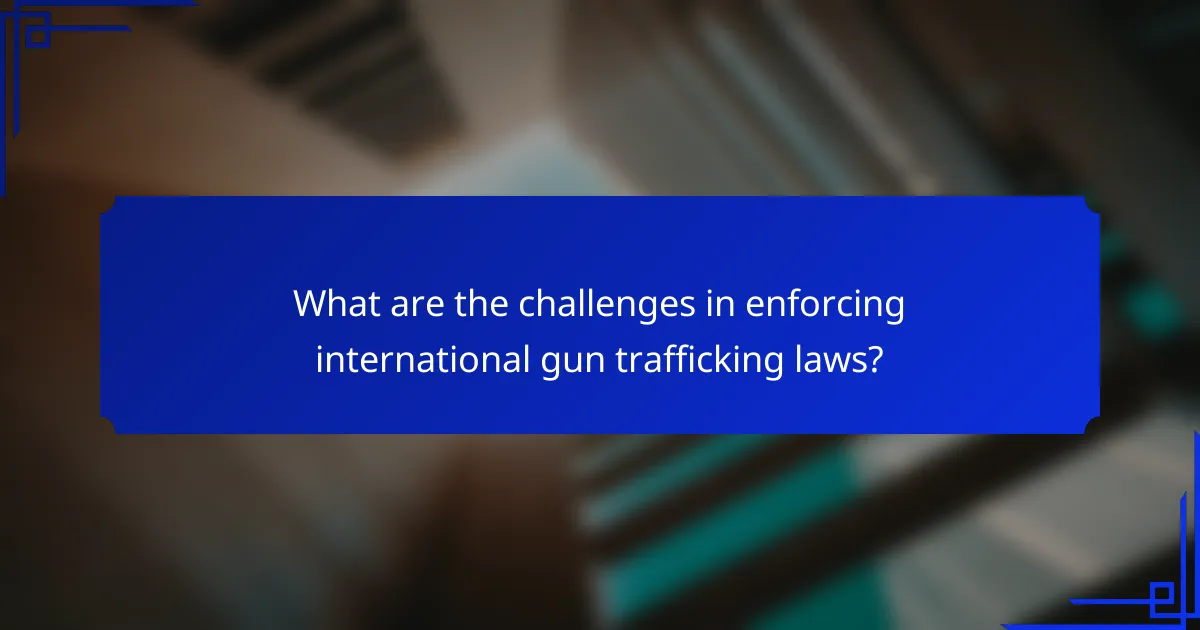
What are the challenges in enforcing international gun trafficking laws?
Enforcing international gun trafficking laws faces significant challenges, primarily due to jurisdictional complexities and resource constraints. These issues hinder effective coordination and compliance among nations, making it difficult to combat the illegal arms trade.
Cross-border jurisdiction issues
Cross-border jurisdiction issues arise when different countries have varying laws and enforcement protocols regarding gun trafficking. This inconsistency can lead to legal loopholes that traffickers exploit, as they may operate in regions with less stringent regulations.
For instance, a trafficker may source firearms in a country with lax laws and transport them to a nation with stricter regulations. This discrepancy complicates prosecution efforts, as law enforcement agencies must navigate multiple legal systems and treaties.
Resource limitations for law enforcement
Resource limitations severely impact law enforcement agencies’ ability to combat international gun trafficking. Many countries lack the financial means, personnel, or technology necessary to effectively monitor and enforce gun laws across borders.
For example, smaller nations may struggle to allocate funds for advanced surveillance equipment or training programs for officers. This can result in inadequate responses to trafficking incidents, allowing illegal operations to flourish.
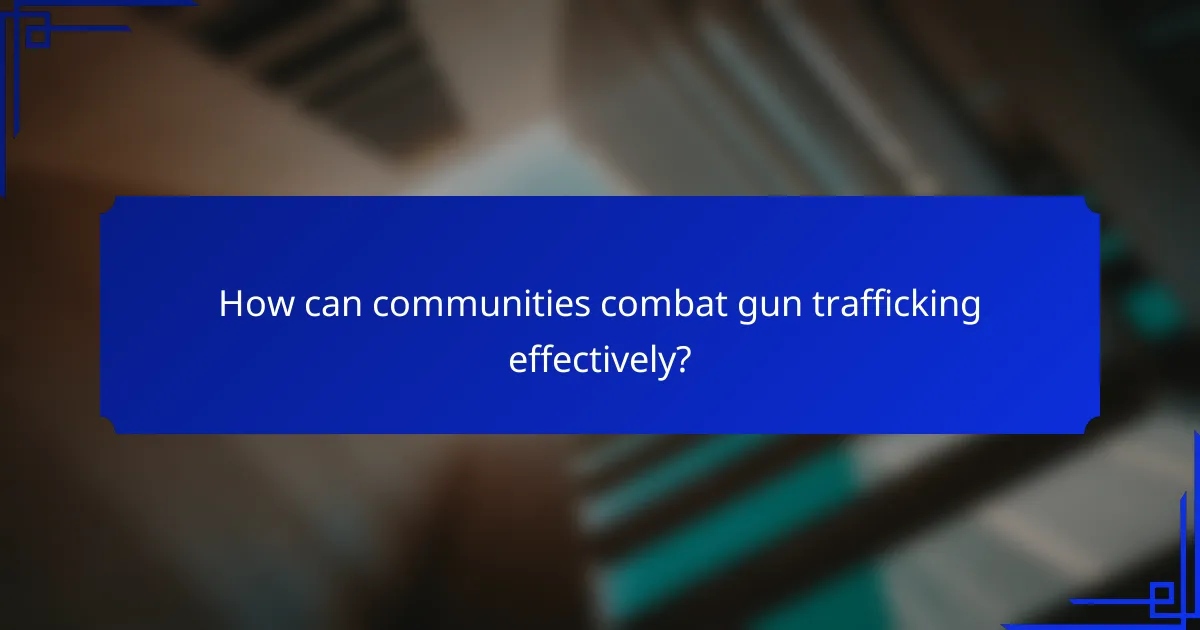
How can communities combat gun trafficking effectively?
Communities can combat gun trafficking by implementing targeted awareness initiatives and fostering collaboration with law enforcement. These strategies enhance local vigilance and create a united front against illegal arms trade.
Local awareness programs
Local awareness programs educate residents about the dangers and signs of gun trafficking. These initiatives can include workshops, informational pamphlets, and community meetings that encourage dialogue and engagement.
Effective programs often utilize social media and local media outlets to spread information quickly. Community members should be encouraged to report suspicious activities, creating a proactive environment against trafficking.
Partnerships with law enforcement agencies
Establishing partnerships with law enforcement agencies is crucial for combating gun trafficking. These collaborations can lead to better intelligence sharing and coordinated efforts to monitor and respond to trafficking activities.
Communities should seek to create regular communication channels with local police, such as community policing initiatives, which help build trust and facilitate timely reporting of suspicious behavior. Joint training sessions can also improve the community’s ability to recognize and respond to trafficking incidents effectively.
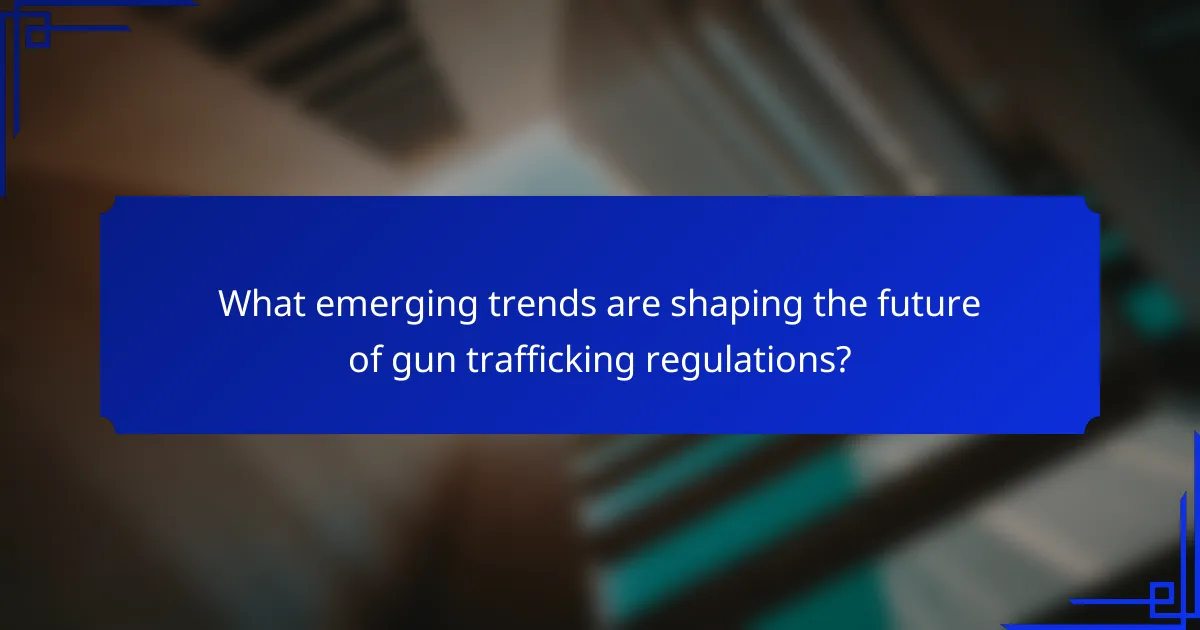
What emerging trends are shaping the future of gun trafficking regulations?
Emerging trends in gun trafficking regulations are increasingly influenced by technological advancements and evolving market dynamics. Key areas of focus include the rise of digital sales platforms and enhanced international cooperation among law enforcement agencies.
Increased focus on digital sales
The shift towards digital sales of firearms has prompted regulators to adapt existing laws to address online transactions. This trend is significant as it allows for greater anonymity and accessibility, making it easier for traffickers to operate across borders.
Regulatory bodies are now emphasizing the need for online marketplaces to implement stringent verification processes for buyers and sellers. This includes requiring background checks and ensuring compliance with local laws, which can vary widely between jurisdictions.
As a practical step, stakeholders in the firearms industry should stay informed about evolving regulations related to online sales. Engaging with legal experts can help ensure compliance and mitigate risks associated with digital transactions.
